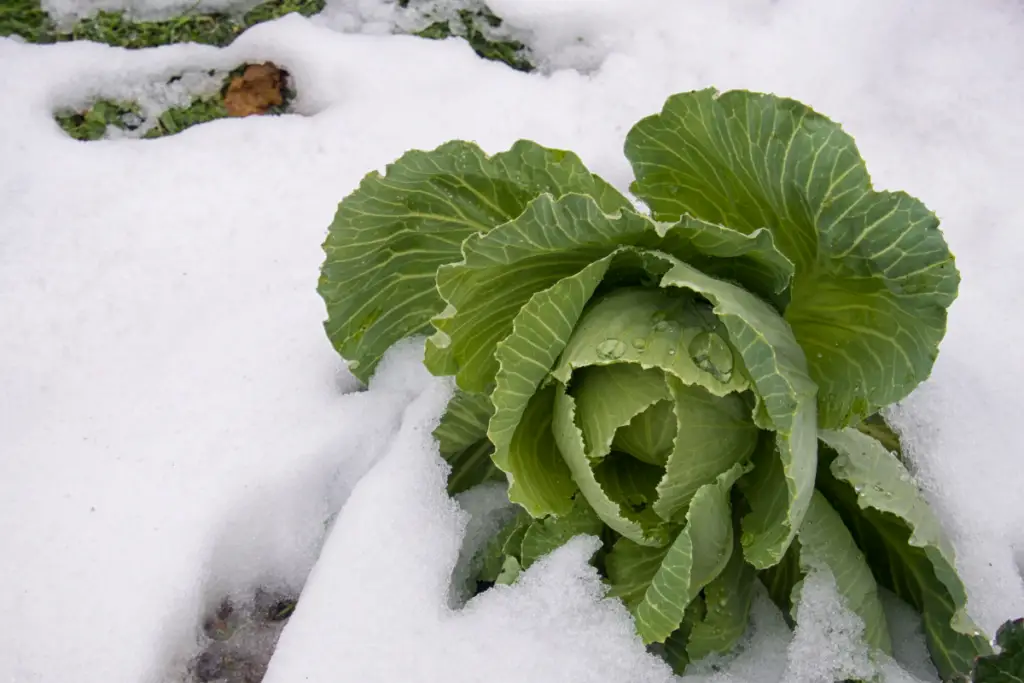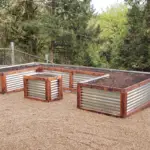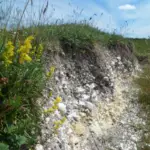Winter hardy plants are those that can withstand cold temperatures and harsh winter conditions.
These plants are able to survive and thrive even in the coldest months of the year, making them a popular choice for gardeners who want to maintain a beautiful landscape throughout the entire year.
The term “hardiness” refers to a plant’s ability to survive cold temperatures, and is often used to describe how well a particular plant will fare in a given climate.
The United States Department of Agriculture (USDA) has developed a plant hardiness zone map that divides the country into 13 zones based on average low winter temperatures.
This map is used by gardeners to determine which plants are most likely to thrive in their specific region.
For example, a plant that is considered hardy in zone 5 may not survive in zone 3, where temperatures can reach much lower levels.
Understanding the hardiness of plants is essential for gardeners who want to create a successful and thriving garden.

Table of Contents
Understanding Winter Hardy Plants
Winter hardy plants are those that can survive freezing temperatures without getting damaged during the winter season.
These plants are perfect for gardeners who live in areas with harsh winter conditions.
They are also ideal for people who want to plant their gardens in the fall and have them last through the winter season.
Most winter hardy plants are perennials, which means that they will come back year after year. They are low maintenance and can tolerate drought, heat, and neglect during the summer season.
Some examples of hardy perennials include daylilies, yarrow, sage, catmint, peony, iris, cranesbill, coneflower, and coral bells.
It is important to note that not all plants are winter hardy. Some plants are considered “half-hardy,” which means that they can survive in cooler temperatures but not freezing temperatures.
Other plants are considered “tender,” which means that they cannot tolerate cold temperatures at all and must be grown indoors during the winter season.
To determine which plants are winter hardy, gardeners can use the USDA Plant Hardiness Zone Map.
This map is based on the average annual minimum winter temperatures and is divided into thirteen distinct 10°F zones, further divided into sub-zones of 5°F.
Gardeners can use this map to determine which plants are most likely to thrive in their specific region.
When planting winter hardy plants, it is important to prepare the soil properly. The soil should be well-drained and rich in organic matter.
Mulching around the base of the plants can also help to protect them from the cold and prevent damage to their roots.
Factors Influencing Winter Hardiness
Winter hardiness is a crucial trait for plants to survive in cold climates. However, not all plants are equally winter hardy.
Several factors can influence the ability of a plant to withstand freezing temperatures and survive the winter.
Genetics
Genetics plays a significant role in determining the winter hardiness of a plant.
Some plant species have evolved in cold climates and have developed genetic traits that allow them to survive freezing temperatures.
For example, conifers such as spruce, fir, and pine are known for their winter hardiness due to their genetic makeup.
Acclimation
Acclimation is the process by which a plant adapts to cold temperatures over time.
During acclimation, the plant undergoes physiological changes that increase its ability to withstand freezing temperatures.
For example, the plant may produce more protective compounds such as antifreeze proteins that prevent ice crystals from forming in its cells.
Environmental Factors
Several environmental factors can influence the winter hardiness of a plant. These include:
- Soil moisture: Plants that are well-hydrated are more likely to survive the winter than those that are dry.
- Soil type: Plants growing in well-drained soil are less likely to suffer from winter damage than those growing in poorly drained soil.
- Wind: Strong winds can cause desiccation and damage to plant tissues, reducing their winter hardiness.
- Snow cover: Snow acts as an insulator, protecting plants from extreme cold temperatures.
Plant Age
The age of a plant can also affect its winter hardiness. Young plants are generally less winter hardy than mature plants.
As a plant matures, it develops a stronger root system and thicker stems, which increase its ability to withstand freezing temperatures.
Common Winter Hardy Plants
When it comes to winter hardy plants, there are several varieties of trees, shrubs, and perennials that can withstand harsh winter conditions.
Here are some of the most common winter hardy plants:
Coniferous Trees
Coniferous trees are trees that have needle-like leaves and cones. They are known for their ability to retain their green color throughout the winter months.
Some common types of coniferous trees include:
- Spruce Trees: Spruce trees are known for their conical shape and needle-like leaves. They can grow up to 60 feet tall and are commonly found in colder regions.
- Pine Trees: Pine trees are known for their long needles and woody cones. They can grow up to 80 feet tall and are commonly found in colder regions.
- Fir Trees: Fir trees are known for their soft needles and cone-like shape. They can grow up to 60 feet tall and are commonly found in colder regions.
Deciduous Trees
Deciduous trees are trees that lose their leaves in the fall and grow new ones in the spring.
Some common types of deciduous trees that are winter hardy include:
- Maple Trees: Maple trees are known for their vibrant fall colors and their ability to withstand cold temperatures. They can grow up to 100 feet tall and are commonly found in colder regions.
- Birch Trees: Birch trees are known for their white bark and their ability to withstand cold temperatures. They can grow up to 80 feet tall and are commonly found in colder regions.
- Oak Trees: Oak trees are known for their sturdy trunks and their ability to withstand cold temperatures. They can grow up to 100 feet tall and are commonly found in colder regions.
Shrubs
Shrubs are small to medium-sized woody plants that have several stems growing from the base.
Some common types of winter hardy shrubs include:
- Boxwood Shrubs: Boxwood shrubs are known for their evergreen leaves and their ability to withstand cold temperatures. They are commonly used for hedges and borders.
- Juniper Shrubs: Juniper shrubs are known for their needle-like leaves and their ability to withstand cold temperatures. They are commonly used for ground cover and as borders.
- Holly Shrubs: Holly shrubs are known for their bright red berries and their ability to withstand cold temperatures. They are commonly used for hedges and as borders.
Perennials
Perennials are plants that live for more than two years.
Some common types of winter hardy perennials include:
- Coneflowers: Coneflowers are known for their bright pink and purple flowers and their ability to withstand cold temperatures. They are commonly used in gardens and as borders.
- Black-Eyed Susans: Black-Eyed Susans are known for their yellow flowers and their ability to withstand cold temperatures. They are commonly used in gardens and as borders.
- Sedums: Sedums are known for their succulent leaves and their ability to withstand cold temperatures. They are commonly used in gardens and as ground cover.
Caring for Winter Hardy Plants
Proper Planting
When planting winter hardy plants, it is important to choose the right location and soil. These plants thrive in well-drained soil that is rich in organic matter.
It is also important to plant them in an area that receives plenty of sunlight and is protected from harsh winds.
To ensure proper planting, follow these steps:
- Dig a hole that is twice as wide and deep as the root ball of the plant.
- Mix in compost or other organic matter to the soil.
- Place the plant in the hole and backfill with soil, making sure it is level with the ground.
- Water thoroughly to help the soil settle around the roots.
- Mulch around the plant to help retain moisture and regulate soil temperature.
Year-Round Care
Winter hardy plants require care throughout the year to ensure their survival and health.
Here are some tips on how to care for them:
Watering
During the growing season, water the plants regularly to keep the soil moist but not waterlogged. In the winter, reduce watering to prevent the roots from getting too wet and freezing.
Fertilizing
Feed the plants with a balanced fertilizer in the spring and fall to provide them with the nutrients they need to grow and thrive.
Pruning
Prune the plants in the spring to remove any dead or damaged branches. This will help promote new growth and keep the plant healthy.
Winter Protection
In the winter, protect the plants from harsh weather conditions by covering them with burlap or other protective material. This will help prevent damage from wind, snow, and ice.
By following these tips, you can ensure that your winter hardy plants will thrive and provide you with beautiful foliage year after year.
Benefits of Winter Hardy Plants
Winter hardy plants are essential for gardens and landscapes in areas with cold winters. They offer several benefits, including environmental impact and aesthetic value.
Environmental Impact
Winter hardy plants have a positive impact on the environment. They can help reduce soil erosion, improve air quality, and provide habitat for wildlife.
These plants are also able to withstand extreme weather conditions, such as heavy snow or freezing temperatures, without damage.
This makes them a sustainable choice for landscaping in areas with harsh winters.
Aesthetic Value
Winter hardy plants can add aesthetic value to a garden or landscape during the winter months.
Many of these plants have unique foliage or bark that can provide visual interest in an otherwise dull winter landscape.
They can also be used to create a focal point or a backdrop for other plants or garden features. Some popular winter hardy plants include evergreens, holly, and winterberry.
In addition to their aesthetic value, winter hardy plants can also provide a source of food and shelter for birds and other wildlife during the winter months.
This can help support local ecosystems and promote biodiversity.
Challenges with Winter Hardy Plants
While winter hardy plants are able to withstand cold winter temperatures, they can still face challenges that affect their growth and survival.
In this section, we will discuss two main challenges that gardeners and growers may encounter when cultivating winter hardy plants.
Pest and Disease Management
Winter hardy plants are not immune to pests and diseases, and in fact, some pests and diseases can be more prevalent in colder months.
For example, spider mites and aphids can infest evergreen plants during the winter, while fungal diseases such as powdery mildew and rust can thrive in cool, damp conditions.
To manage pests and diseases, gardeners and growers should regularly inspect their plants for signs of infestation or infection.
They can also use preventative measures such as applying dormant oil sprays to control overwintering pests, and ensuring proper drainage and air circulation to prevent fungal growth.
Climate Change Impact
Climate change can also pose a challenge to winter hardy plants. As temperatures fluctuate and extreme weather events become more common, some plants may struggle to adapt.
For example, warmer winters may cause some plants to break dormancy too early, making them vulnerable to late frosts.
Conversely, prolonged periods of cold and snow can damage or kill some plants.
To mitigate the impact of climate change on winter hardy plants, gardeners and growers can choose plant varieties that are better adapted to changing conditions.
They can also implement practices such as mulching to protect plants from temperature fluctuations, and using irrigation to provide consistent moisture during dry spells.
Conclusion
In conclusion, winter hardy plants are essential for gardens and landscapes in regions with cold and harsh winters.
These plants have unique characteristics that enable them to survive and thrive in low temperatures and adverse weather conditions.
Winter hardy plants are also low-maintenance, making them ideal for gardeners who want to create beautiful outdoor spaces without spending too much time and effort.
By understanding the meaning and characteristics of winter hardy plants, gardeners can choose the right species for their gardens and enjoy year-round beauty and color.
- How to Dry Basil Leaves: A Professional Guide
- Is an Avocado a Fruit or Vegetable? Simple Answer and Explanation
- Does Pineapple Have Seeds? Exploring the Anatomy of Pineapples
- Blooming Through Winter: Can I Grow Vegetables Indoors in the Winter?
- What Can You Grow in a Greenhouse All Year Round: A Guide to Year-Round Greenhouse Gardening
- Are Blueberries Blue? Debunking the Myth of Their Color
















